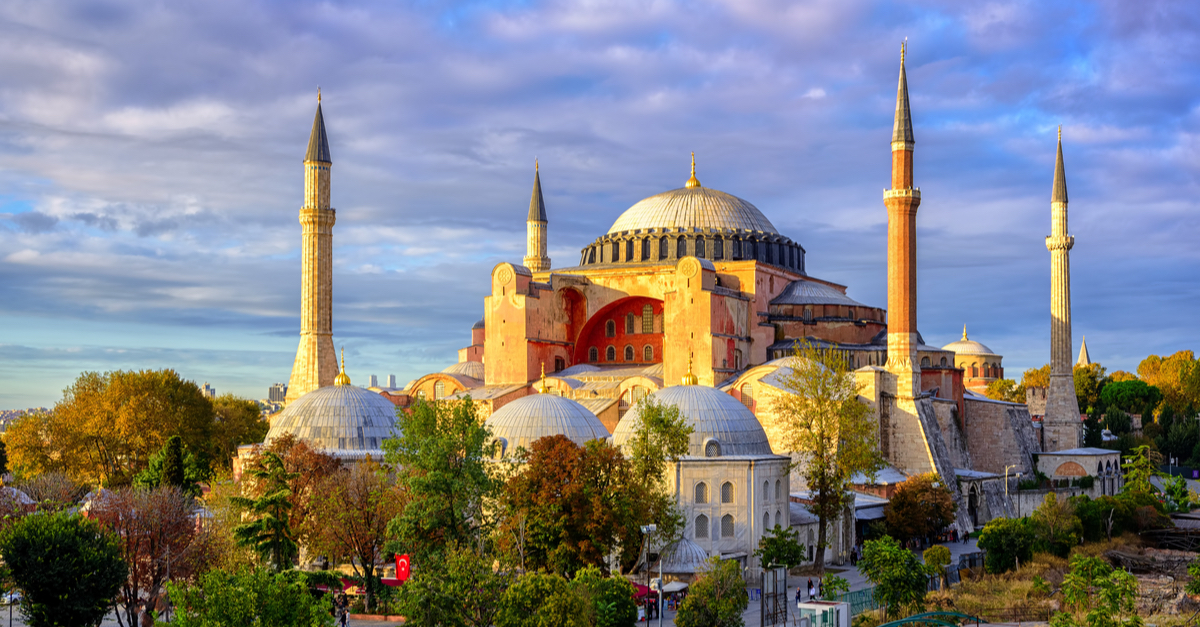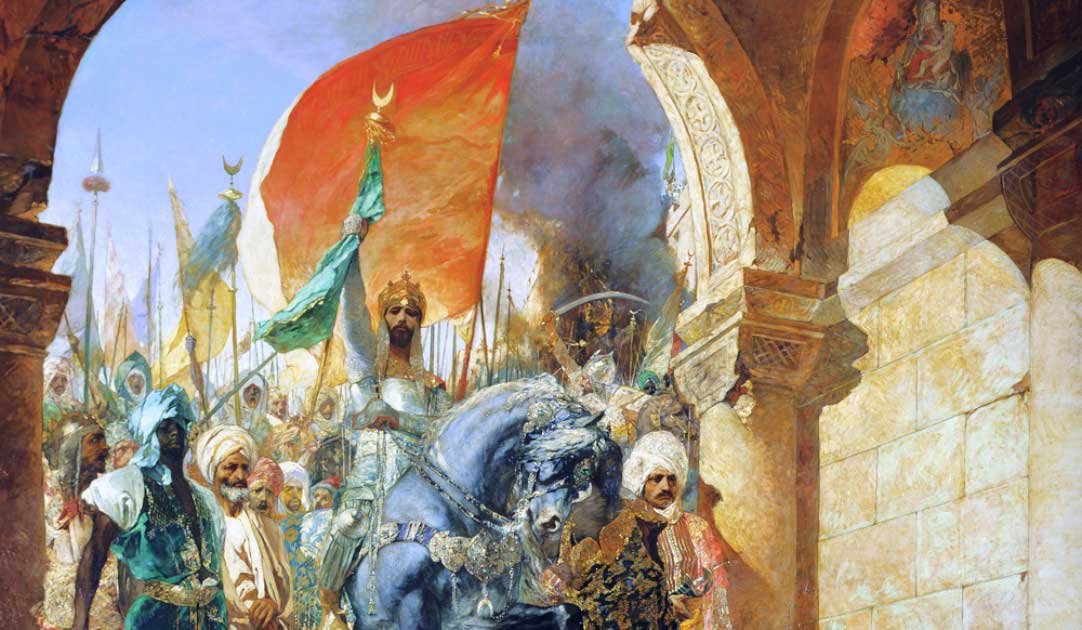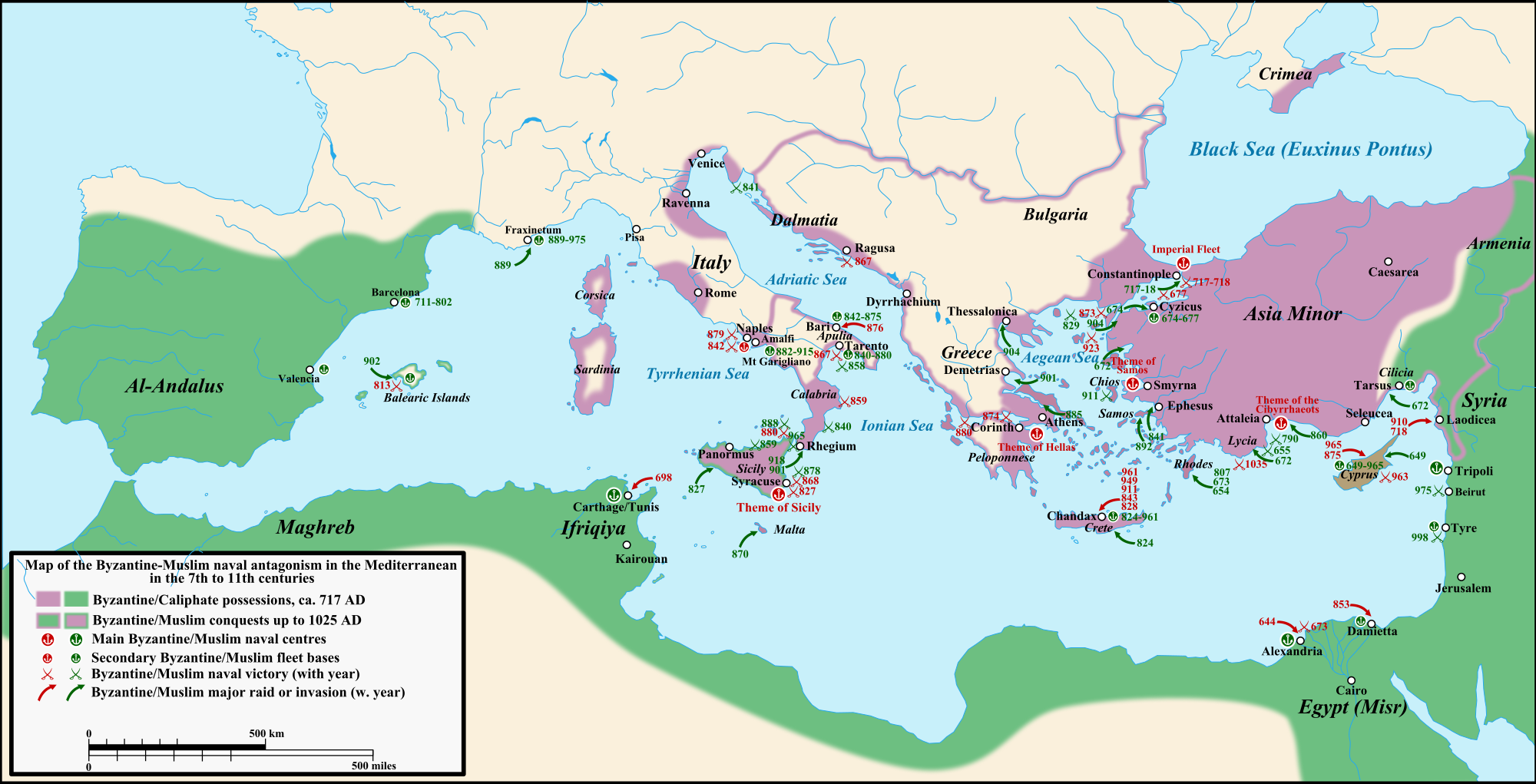
Mehmed The Conqueror Mehmed the conqueror, Art institute of chicago, Ottoman empire
Introduction The Ottoman Empire The Great Mosque in Damascus, Syria © The Ottoman Empire was the one of the largest and longest lasting Empires in history. It was an empire inspired and.

Sinan, the Ottoman Empire’s Master Architect Britannica
Fall of Constantinople, (May 29, 1453), conquest of Constantinople by Sultan Mehmed II of the Ottoman Empire. The dwindling Byzantine Empire came to an end when the Ottomans breached Constantinople's ancient land wall after besieging the city for 55 days.

Vintage Photo of Constantinople Istanbul Yeni Cami 1895 VINTAGE MAPS AND PRINTS
For specific studies on the function of Constantinople in the Islamic apocalyptic K. Şahin / Journal of Early Modern History 14 (2010) 317-354 325 Peoples25 (Banu al-Asfar). Accordingly, the Muslim conquest of Constan- tinople was a portent of the end. This first conquest would soon be fol- lowed by a counter-attack by the Blond Peoples, and.
The Scroll of Heaven ByzantiumConstantinopleIstanbul Tours & Study Days
The first Arab siege of Constantinople in 674-678 was a major conflict of the Arab-Byzantine wars, and the first culmination of the Umayyad Caliphate 's expansionist strategy towards the Byzantine Empire, led by Caliph Mu'awiya I. Mu'awiya, who had emerged in 661 as the ruler of the Muslim Arab empire following a civil war, renewed aggressive wa.

All Grace Blog Constantinople A City Subjugated By Islam
The fall of Constantinople, also known as the conquest of Constantinople, was the capture of the capital of the Byzantine Empire by the Ottoman Empire.

Has the Hadith Regarding the Conquest of Constantinople Been Fulfilled?
Constantinople, the Conquest of Contributed by Prof. Dr. Nazeer Ahmed, PhD The Battle of Ankara (1402) decimated Ottoman power in Anatolia. Bayazid I, who might very well have been remembered in history as the Napoleon of the era, was captured by Timur and died in captivity.

Constantinople Fall of constantinople, Islamic paintings, Painting
CONSTANTINOPLE: FROM CHRISTIANITY TO ISLAM Of the Fall of Constantinople to the Ottoman Turks in 1453, aa contemporary observer, the Hellenist chronicler Chalconcondylas, wrote: This was surely the most grievous catastrophe known to history, and the complete destruction of the Greeks matches the Fall of Troy, a capture of Troy by the

1453 The Ottomans conquer Constantinople for Islam 5Pillars
The second Arab siege of Constantinople was a combined land and sea offensive in 717-718 by the Muslim Arabs of the Umayyad Caliphate against the capital city of the Byzantine Empire, Constantinople.

How Did Constantinople Istanbul? WorldAtlas
The 717-18 Siege of Constantinople. by John Bertrand 11/1/2016. The 632 death of Muhammad, the unifying Arab military leader and founder of Islam, presaged the beginning of the Muslim conquests that over ran much of the Middle East and North Africa. By the early 8th century Muslim armies of the Umayyad caliphate stood poised on Europe's.

The First Arab Siege of Constantinople
Answer: Wa'alaykum assalam. Jazakum Allah khayr for your question. The Prophet ﷺ is reported to have said, 'Verily you shall conquer Constantinople. What a wonderful leader will her leader be, and what a wonderful army will that army be!' [Musnad Ahmad, Al Hakim, al Jami' al Saghir]

Map of the Muslim expansion and the Byzantine Empire at the end of the Umayyad Caliphate, in 750
Referred as "Costantiniyya" by Arabs, Constantinople, the capital of the Eastern Roman Empire, became an ideal of Muslims. The Prophet Muhammad's well-known hadiths (prophetic tradition).

The Conquest of Constantinople › The Islam Shop Blog
Islam's Greatest Victory: The Fall of Constantinople, May 29, 1453 05/29/2019 by Raymond Ibrahim 50 Comments Today in history, on May 29, 1453, the sword of Islam conquered Constantinople. Of all of Islam's conquests of Christian territory, this was by far the most symbolically significant.

Was the First Islamic Siege of Constantinople (674 678 AD) a Historical Misnomer? Ancient
The conquest of Constantinople by the Ottoman Turkish Sultanate led by Sultan Muhammad Al-Fatih in 1453 became one of the most important events in the history of Muslims and the world.

Did Constantinople Fall Because Someone to Lock the Gate? Ancient Origins
Section: UNCLASSIFIED On Tuesday morning, 20 Jumada al-Ulaa, 857H; may 29, 1453AD, the Ottoman sultan, Mohammed Alfateh launched his last attack to conquer constantinople, after a siege that lasted more than 50 days. When the conquest became evident, the sultan was told, that the Prophet's, sallallahu alayhe wa sallam, prophecy had been fulfilled.

FileHagia Sophia mosque and Ahmed III fountain, Constantinople, Turkey, ca. 1896.jpg
This article will cover the first time Arab armies attempted a siege of Constantinople.. The Rise of Islam. After the fateful Battle of Yarmouk in 636, the Arab armies swept through most of Roman territory in the eastern Mediterranean, taking Egypt, Syria, Armenia and even moving into the eastern portions of Anatolia. In the face of this.

AM25 Die arabische Belagerung Konstantinopels und die Anfänge des Ikonoklasmus ANNO MUNDI
Muhammad Al-Fatih was born on 27th. Rajab, 835 A.H., 30th. March, 1432. He was brought up under the supervision of his father, Sultan Murad II, the seventh Ottoman Sultan. His father prepared and trained him to shoulder the responsibilities of the position of a Sultan. Muhammad Al-Fatih memorized all the Quran, learnt the Prophetic narrations.